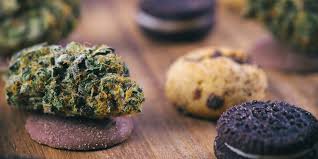Edible cannabis: What you need to know

With the Cannabis Act set to legalize most forms of recreational cannabis in just a few short weeks, many consumers and businesses alike may require further clarity on the limited scope of legalization.
Unlike the fresh, dried and oil options, edible cannabis will not be available for purchase and sale on October 17, 2018.
The sale and purchase of 'edibles', or cannabis-containing food products, will not become legal in Canada until 2019, due to the added complexity of dosing, packaging and regulating these products. This article provides an overview of the current status of edibles in North America, including a review of the regulatory schemes in certain U.S. states, including Colorado, California, and Massachusetts.
What is Permitted?
In Canada, the Cannabis Act will permit adults over 18 years of age to legally purchase and share up to 30 grams of a range of cannabis products, including dried and non-dried cannabis, cannabis oil, plants, seeds, and edible products such a food and drinks that are homemade. Edible products can include beer, baked goods, candies, and many other options that lack the social stigma that may come with smoking a joint.
Under an amendment adopted by the House of Commons Standing Committee on Health, the Canadian Federal Government intends to authorize the legal sale of cannabis edible products and concentrates no later than October 17, 2019.
This delay may come as a surprise to many, as edibles comprise a large part of the consumer market in the US States that have legalized and regulated cannabis products. Commentators have pointed out that edibles are discrete and do not require the user to smoke. Therefore, they can be used in more locations, may have fewer health risks, and may appeal to particular markets such as new or low dose users.
While no specifics on the regulation of edible cannabis in Canada have been released, Colorado and other US States have had legislation in place for quite some time. Many US State regulations provide that an edible producer cannot use a commercially manufactured food product as its edible retail marijuana product, unless that food product is used as an ingredient such as flour. Put more simply, edible producers need to produce their own food product and cannot just add cannabis oil to existing food products. In addition, there is a general prohibition in most US States that have legalized cannabis on the sale of edibles that are the distinct shape of a human, animal, or fruit.
Edibles are also required to have similar nutritional content information as other food products and include the production and expiry dates. Producers of edibles are required to obtain a licence, similar to the requirements for cannabis producers, and in certain US States are required to obtain a food handling permit, similar to what restaurants in Alberta are required to obtain from Alberta Health Services.
What About Dosage?
Another challenge that comes with regulating edibles is ensuring that commercially sold edibles not only meet the regulated standards for cannabis content, but also that the producers have a consistent system to determine dosage so consumers can control their intake amounts.
While the Cannabis Act included edibles within the possession limit of 30 grams of dried cannabis or its equivalent, dosage continues to be one of the great unknowns as there is still no easily understood unit of measurement for cannabis dosage, as there is for other intoxicants such as 'drinks' of alcohol.
Throughout the Cannabis Act, possession limits are expressed in terms of dried cannabis. As such, the Government of Canada has developed equivalencies for other types of cannabis products to clarify the possession limits. Specifically, Schedule 3 of the Cannabis Act provides the following equivalent amounts to one (1) gram of dried cannabis:
- 5 g of fresh cannabis,
- 15 g of edible product,
- 70 g of liquid product,
- 0.25 g of concentrates (solid or liquid), or
- 1 cannabis plant seed.
In the US, most States have two classes of cannabis edibles: single and multidose edibles. Single edibles are intended for one person and contain a maximum of 10 mg of THC. Multidose edibles are intended for more than one serving and may have up to 100 mg of THC. In addition, most State regulations provide that edible products must have an even distribution of THC amongst the entirety of the batch. Regulators are trying to avoid instances where dosing is unpredictable and the consumer is not aware of their consumption amounts.
In Massachusetts, the governing regulation also requires a warning on the packaging that the impairment effects of edibles may be delayed by two hours or more. This highlights a common risk where users can accidentally consume more active THC than they intend when consuming edibles, as the effects are often delayed as compared to other forms of cannabis consumption.
420 Intel is Your Source for Marijuana News
420 Intel Canada is your leading news source for the Canadian cannabis industry. Get the latest updates on Canadian cannabis stocks and developments on how Canada continues to be a major player in the worldwide recreational and medical cannabis industry.
420 Intel Canada is the Canadian Industry news outlet that will keep you updated on how these Canadian developments in recreational and medical marijuana will impact the country and the world. Our commitment is to bring you the most important cannabis news stories from across Canada every day of the week.
Marijuana industry news is a constant endeavor with new developments each day. For marijuana news across the True North, 420 Intel Canada promises to bring you quality, Canadian, cannabis industry news.
You can get 420 Intel news delivered directly to your inbox by signing up for our daily marijuana news, ensuring you’re always kept up to date on the ever-changing cannabis industry. To stay even better informed about marijuana legalization news follow us on Twitter, Facebook and LinkedIn.




